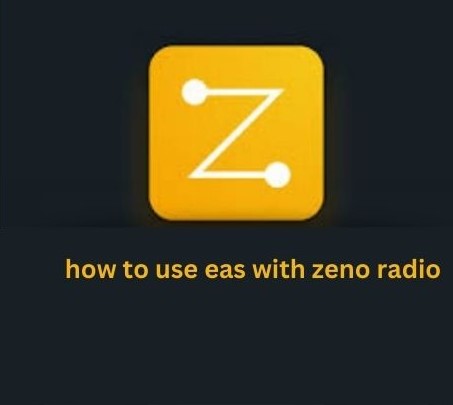Introduction
Communicating in the modern world of broadcasting is of course, critical, particularly in times of the present. The fundamental HSE requirement that protects the general public is the Emergency Alert System otherwise referred to as EAS. In essence, the integration of EAS with other platforms like Zeno Radio will give you a lot more than what you need in broadcasting. In this article, more specifics of how to coordinate EAS with Zeno Radio will be given together with detailed instructions and facts on how to do it.
Understanding the Emergency Alert System (EAS)
Now, to avoid any confusion concerning how EAS will be implemented with Zeno Radio, let’s first take a closer look at what EAS actually stands for. The Emergency Alert System is a nationwide alerting system that is intended to enable the National and State Coordinating Emergency Alert official to convey important information to the public within the shortest time possible. This consist of warning on adverse weather conditions, times when there are local disasters or any other important incidence that need the attention of residents of that area.
Also read: Ephbataller
Why EAS is Essential for Broadcasters
There is a great importance of EAS in the broadcasting industry. To the broadcasters, it may be of great importance to own such a capability with which they can help inform their audience on emergencies. Furthermore, the implementation of EAS also benefits the public in term of safety while at the same time also increases credibility within the society. People are aware that they can turn to the broadcasters whenever there is a need to get information concerning any particular hour.
An Introduction to Zeno Radio
Zeno Radio is one of the strongest online broadcast systems through which the users can broadcast their contents across the world. It is especially popular for its intuitive interface and large coverage; these factors make the choice in favor of the application quite reasonable for broadcasters who are interested in connecting with the listeners from other regions.
Key Features of Zeno Radio
- Intuitive Interface: Zeno Radio’s platform is designed for ease of use, enabling broadcasters to manage their stations efficiently.
- Global Accessibility: The platform allows broadcasters to reach a worldwide audience, making it particularly beneficial for international content.
- Flexible Streaming Options: Broadcasters can choose various formats and settings, tailoring their streams to meet their audience’s needs.
Steps to Set Up EAS with Zeno Radio
Now that we understand the basics, let’s move on to the practical steps of how to use EAS with Zeno Radio. This section will guide you through the setup process to ensure a smooth integration.
Step 1: Acquire the Necessary EAS Equipment
The first step in how to use EAS with Zeno Radio is to gather the required EAS equipment. This typically includes:
- EAS Encoder: This device is responsible for encoding emergency messages to be transmitted over the air.
- EAS Decoder: This device receives the EAS messages and decodes them for broadcasting.
- Broadcast Console: A console is needed to manage audio levels and other broadcasting functions.
Step 2: Register Your Station with EAS
Once you have the equipment ready, the next step is to register your station with EAS. This process generally involves:
- Completing an Application: Fill out the necessary forms to register your station with the local EAS authority.
- Training for Staff: It’s crucial to ensure that your staff is trained in EAS procedures and protocols to respond effectively during emergencies.
Step 3: Configure Your EAS Equipment
After registration, the next step is to configure your EAS equipment properly. This involves:
- Setting Up EAS Codes: Input the correct EAS codes relevant to your geographical area and the types of emergencies you’ll be broadcasting.
- Testing the System: Conduct initial tests to ensure that your equipment functions as intended.
Integrating EAS with Zeno Radio
With your EAS equipment set up, it’s time to focus on how to use EAS with Zeno Radio. This section will cover the integration process step by step.
Step 4: Connect Your EAS Decoder to the Broadcast Console
To effectively integrate EAS with Zeno Radio, you need to connect your EAS decoder to your broadcast console. This connection allows emergency messages to be transmeiter alongside your regular broadcasts. Ensure that the audio output from the EAS decoder is correctly rout through your broadcast console to Zeno Radio.

Step 5: Configure Zeno Radio Streaming Settings
Next, you’ll need to adjust your Zeno Radio streaming settings to accommodate EAS messages. Here’s how to do it:
- Log into Your Zeno Radio Dashboard: Access your Zeno Radio account to manage your settings.
- Adjust Audio Input Settings: Make sure the audio input captures EAS messages properly by selecting the appropriate channel.
- Enable Emergency Messaging Features: Ensure that your stream can prioritize emergency messages or create a dedicated channel for them.
Step 6: Conduct Regular Testing
To ensure that your EAS system operates correctly, it’s essential to schedule regular testing. Conduct these tests monthly to ensure that your staff is familiar with the procedures to activate the system in an actual emergency situation.
Effective Strategies for Implementing EAS with Zeno Radio
Having covered the steps, let’s explore some best practices to follow when implementing how to use EAS with Zeno Radio effectively.
Stay Informed on EAS Regulations
EAS regulations can evolve, so it’s important to stay updated on any changes. This ensures compliance and helps you use the system effectively. Regularly check the Federal Communications Commission (FCC) website and other relevant resources for updates.
Regular Staff Training
Training your staff on EAS procedures is vital. Schedule regular training sessions to keep them familiar with the equipment and protocols. Conduct mock drills to simulate emergency situations, ensuring everyone knows their roles during an actual emergency.
Maintain Your Equipment
Routine maintenance of your EAS equipment is crucial. Schedule periodic checks to ensure everything is functioning properly, and replace any worn-out components as needed. This preventive approach will help you avoid issues during critical moments.
Troubleshooting Common Issues
As you navigate how to use EAS with Zeno Radio, you may encounter some common issues. Here’s how to troubleshoot these problems effectively.
Issue 1: EAS Messages Not Broadcasting
If your EAS messages are not broadcasting as intended, consider the following steps:
- Check All Connections: Ensure that all connections between the EAS decoder and your broadcast console are secure and functioning.
- Inspect Audio Settings: Verify that the audio settings on Zeno Radio are configure correctly to receive EAS messages.
Issue 2: Poor Audio Quality
If you notice poor audio quality in your EAS broadcasts, you can try:
- Adjusting Audio Levels: Make sure that audio levels are balance between regular broadcasts and EAS messages to maintain clarity.
- Inspecting Equipment: Check your EAS equipment for any malfunctions that may affect audio quality.
Legal and Ethical Considerations
When using EAS, it’s essential to understand the legal and ethical responsibilities that come with broadcasting emergency messages. Compliance with FCC regulations is paramount. Failing to adhere to these regulations can lead to penalties and damage your station’s reputation.
Understanding the Law
Familiarize yourself with the laws surrounding emergency broadcasting. This includes knowing who has the authority to send EAS messages and under what circumstances. Always ensure that the messages you broadcast are accurate and provide the necessary information to the public.
Ethical Broadcasting Practices
Ethically, broadcasters have a duty to ensure that the information they provide is timely and accurate. This means verifying the information before broadcasting it. Misinformation during emergencies can lead to public panic and a loss of trust in your station.
The Future of EAS and Zeno Radio
As technology continues to evolve, so too will the capabilities of EAS and platforms like Zeno Radio. Embracing new technologies and adapting to changes will be crucial for broadcasters aiming to enhance their emergency communication strategies.
Innovations in EAS
New advancements in technology are paving the way for more efficient EAS systems. For instance, integrating mobile alerts and social media notifications can complement traditional broadcasting methods, ensuring that information reaches audiences through multiple channels.
The Role of Zeno Radio
Zeno Radio will likely continue to play an essential role in the broadcasting landscape, especially as more listeners turn to online streaming. Broadcasters should stay ahead of trends and explore new features that Zeno Radio may introduce to enhance their services.
Conclusion
Integrating EAS with Zeno Radio is not just a technical process; it’s a vital commitment to public safety and community engagement. By following this comprehensive guide on how to use EAS with Zeno Radio, you can ensure that your station is prepare to deliver essential information promptly during emergencies.
Effective communication during critical times can save lives and foster trust within your community. Regular training, equipment maintenance, and staying informed about regulations will enable your station to operate smoothly and effectively.
